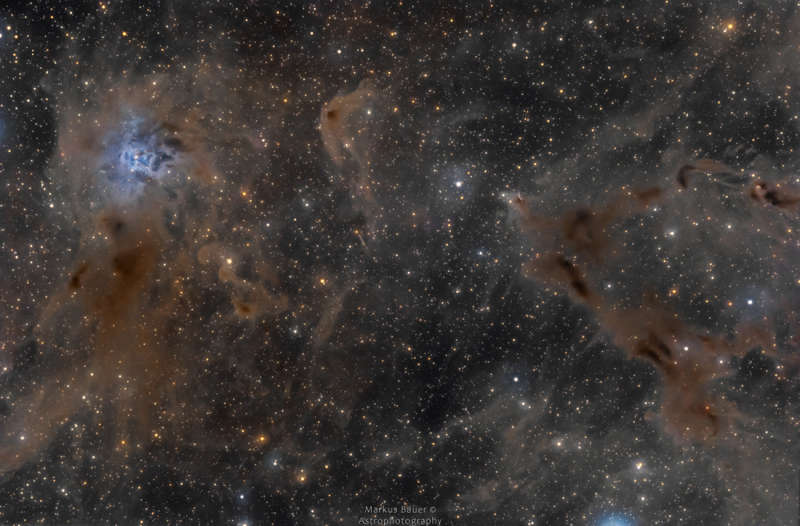Credit & Copyright: Markus Bauer
Explanation:
These
cosmic dust clouds drift
some 1,300 light-years away along the
fertile starfields of the constellation Cepheus.
The beautiful Iris Nebula,
also known as NGC 7023, blossoms at the upper left.
Not the only nebula in the sky to evoke the imagery of flowers,
its pretty, symmetric form spans about 6 light-years.
This nebula's dominant blue color is characteristic of
the pervasive dust grains reflecting light from a nearby hot, bluish star.
But darker, obscuring dust clouds cover
most of the nearly 4 degree wide field of view.
At
the right is the LDN 1147/1158 complex of
Lynds Dark Nebulae.
Stars are forming there, still hidden
within the dark cloud cores.
A search through the sharp image can identify
Herbig-Haro objects
though, jets of shocked glowing gas emanating from recently formed stars.
1999 2000 2001 2002 2003 2004 2005 2006 2007 2008 2009 2010 2011 2012 2013 2014 2015 2016 2017 2018 2019 2020 2021 2022 2023 2024 2025 |
Yanvar' Fevral' Mart Aprel' Mai Iyun' Iyul' Avgust Sentyabr' Oktyabr' Noyabr' Dekabr' |
NASA Web Site Statements, Warnings, and Disclaimers
NASA Official: Jay Norris. Specific rights apply.
A service of: LHEA at NASA / GSFC
& Michigan Tech. U.
|
Publikacii s klyuchevymi slovami:
NGC 7023 - reflection nebula - Tumannost' Iris - otrazhatel'nye tumannosti
Publikacii so slovami: NGC 7023 - reflection nebula - Tumannost' Iris - otrazhatel'nye tumannosti | |
Sm. takzhe:
Vse publikacii na tu zhe temu >> | |
